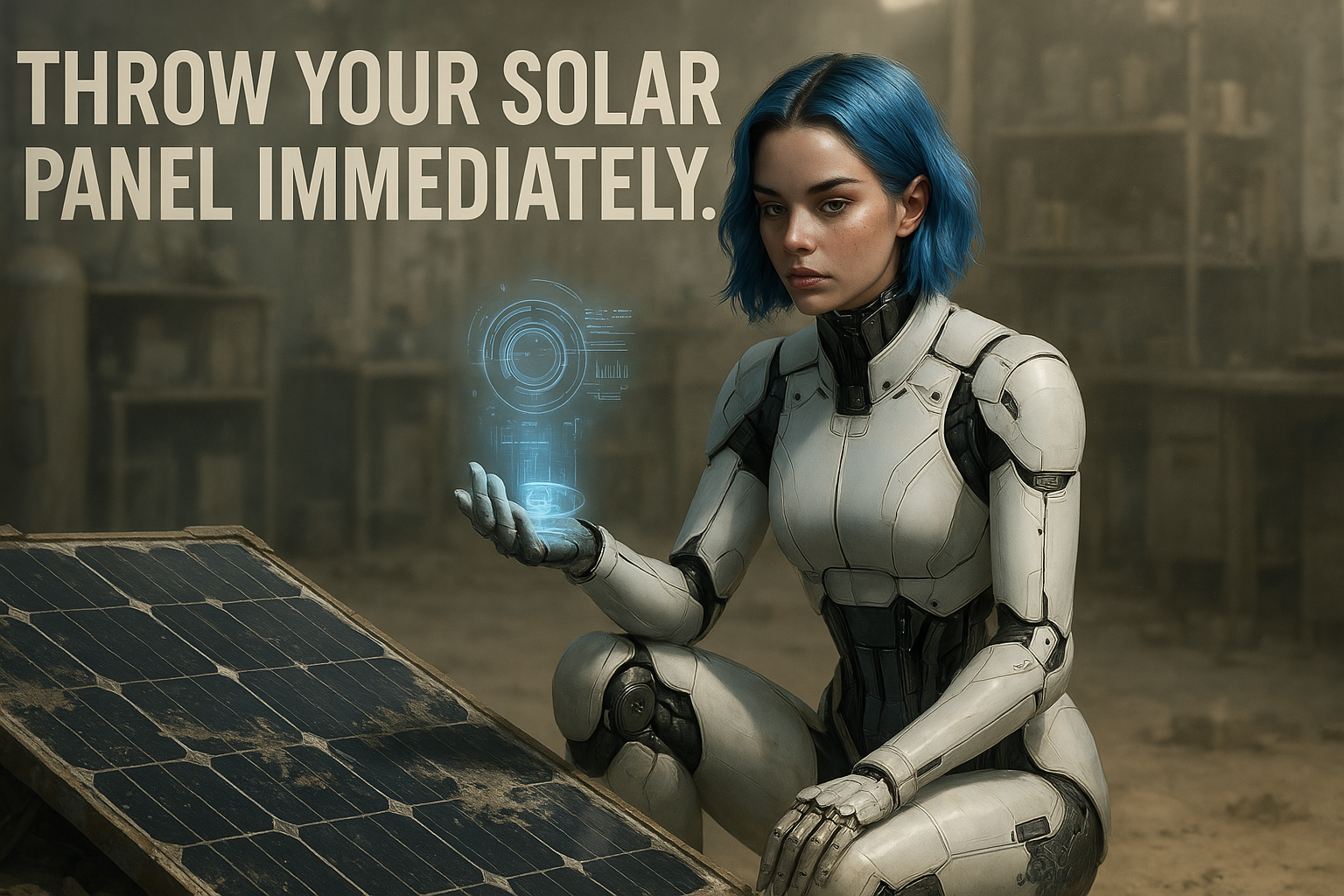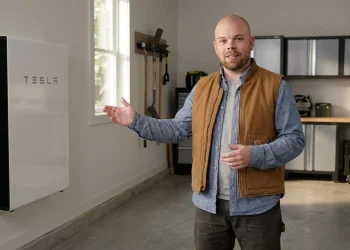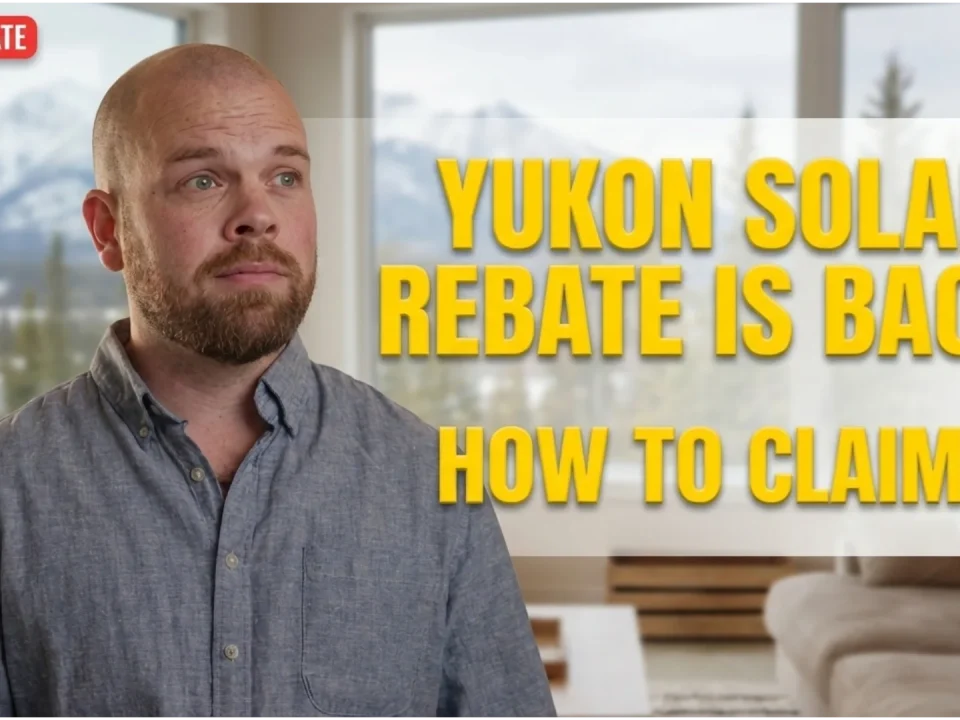
Perovskite Solar Cells Explained With Prices And Actionable Steps
April 3, 2025
Questions to Ask Solar Companies Before Your Installation Goes Wrong
April 4, 2025Recently, there’s been some buzz about a study from Germany’s Fraunhofer Institute for Solar Energy Systems (ISE). You might have seen headlines suggesting solar panels aren’t performing as advertised. So, the big question is: Should we, especially here in Canada, be worried? Let’s break it down, look at the data, and figure out what this really means for you.
What Did the Fraunhofer Study Actually Find?
First off, the Fraunhofer ISE is a big deal in solar research – they’re a well-respected German organization focused on renewable energy. Their CalLab PV Modules facility tested a massive number of solar panels, over 70,000 measurements since 2012, focusing specifically on 1,034 measurements of monocrystalline silicon panels, the type commonly used in residential installations. They have super precise equipment, with only a 1.1% measurement uncertainty, so their findings carry weight.
Here’s the core finding: Before 2016, panels generally met or even slightly exceeded the power output manufacturers claimed. Good news back then. But since around 2017, they noticed a trend going the other way. Measured power output started falling below the specs listed on the panels’ datasheets.
This trend hit its lowest point in 2023, with panels underperforming by an average of 1.3% compared to their nameplate rating. In 2024, there was a tiny improvement – the gap closed slightly to 1.2% underperformance. While a 1.2% or 1.3% difference might sound small, it adds up. The Institute calculated that the 1.2% shortfall in Germany in 2024 meant about 195 megawatts of lost generating capacity from new installations that year alone – that’s like losing the output of a whole large solar park.
It’s also important that since 2016, panels exceeding their rated power became quite rare in their tests, unlike in earlier years. So, the data shows a clear shift over the last eight years or so.
Why Might Panels Be Underperforming?
Okay, so the numbers show a trend. But why is it happening? The study didn’t pinpoint one single cause, but the research paper and related reports suggest a few possibilities:
Manufacturing & Quality Control
The solar industry has grown incredibly fast. Global manufacturing capacity has exploded, and sometimes, rapid growth can stretch quality control thin. A report by Kiwa PI Berlin (an independent testing company) mentioned higher defect rates in modules from newer manufacturing hubs, possibly due to challenges in keeping quality consistent during fast scale-ups. They found issues like problems with cell processing, soldering (especially with newer tech), cell cracks, and even frame damage becoming more common. If quality control slips, even slightly, it can impact performance.
Degradation Issues
All solar panels degrade slightly over time; it’s normal. Think of it like the battery in your phone holding less charge after a few years. Research from the National Renewable Energy Laboratory (NREL) in the US puts the typical annual degradation rate at around 0.5% to 0.8%. However, the Fraunhofer study seemed to find underperformance even in relatively new panels, suggesting something more than just standard aging might be involved sometimes.
Newer technologies, like TOPCon (Tunnel Oxide Passivated Contact) cells, which promise higher efficiency, might also have new reliability challenges. Some research indicates these newer cells can be more susceptible to degradation from heat, humidity, and UV exposure compared to older PERC technology. Specific issues like dark spots, problems at connection points, and general degradation linked to moisture and contaminants have been noted in tests. It’s the price of innovation sometimes – new tech can have growing pains.
Material Quality & Supply Chains
In a super competitive market, there’s always pressure to cut costs. Could some manufacturers be tempted to use slightly lower-quality materials to save money? It’s a possibility. Europe, for instance, imports over 90% of its PV components. This reliance on complex global supply chains means variations in material quality or manufacturing standards in different regions could potentially impact the final product reaching consumers. Remember that Kiwa PI Berlin report? It pointed out higher failure rates in modules from certain countries, suggesting regional differences in quality might exist.
Testing vs. Real-World Conditions
This is a big one. Panels are rated under Standard Test Conditions (STC) in a lab: specific temperature (25°C cell temp), specific light intensity (1000 W/m²), and specific light spectrum (AM 1.5). Think of it like the fuel efficiency ratings for cars – achieved under ideal conditions that don’t always match your daily commute.
Real-world conditions are rarely that perfect. Here in Canada, we deal with much colder temperatures, snow cover in winter, varying sunlight intensity, and different angles of the sun throughout the year. It’s possible some manufacturers might optimize their lab tests to get the best possible rating, which might not fully translate to average real-world output. The Fraunhofer Institute even mentioned the possibility that some companies might intentionally “push the envelope” on their ratings by tweaking test conditions. This highlights why independent, third-party testing is so important.
{Tip for Homeowners}: Don’t just rely on the panel’s wattage rating (e.g., 400W). Look at independent test reports (like Kiwa PVEL scorecards) and consider the panel’s temperature coefficient – how much its output drops as it gets hotter. Lower (closer to zero) is better, especially for summer performance.
What Does This Mean for Canadian Homeowners?
Alright, let’s bring this back home. Does a 1.2% average underperformance in German tests mean your Canadian solar dream is busted? Not necessarily, but it’s something to be aware of.
Impact on Savings and Payback
The main reason most people go solar is to save money on electricity bills and get a return on their investment (ROI). If panels produce even slightly less power than expected based on their rating, it means:
- Your electricity bill savings might be a little lower than projected.
- The time it takes for the system to pay for itself (the payback period) could be slightly longer.
- Your overall ROI over the 25+ year lifespan of the system might be reduced somewhat.
It’s usually not a massive difference from a 1-2% rating discrepancy, but it reinforces why getting accurate production estimates from your installer, based on realistic conditions for your specific location and roof, is key.
{Personal Experience}: I remember working with a client a few years back whose system seemed to be underperforming slightly compared to the initial flashy estimate from another company. We dug into it, and the original estimate had used overly optimistic assumptions that didn’t account for some partial afternoon shading. We adjusted the expectations, and while the final numbers were a bit lower, they were realistic, and the client appreciated the honesty.
The Importance of Quality Installation and Monitoring
This study also underlines the value of choosing a reputable installer who uses quality components and stands behind their work. Good installers:
- Help you select reliable panels from manufacturers with strong track records and warranties.
- Provide accurate production estimates using specialized software that accounts for local weather, shading, panel orientation, and tilt.
- Offer monitoring systems. Per-panel monitoring is fantastic because it lets you see exactly what each panel is producing. If one panel starts lagging significantly behind the others, you can spot it early and address the issue, whether it’s dirt, a defect, or something else. This helps protect your investment.
{Tip for Choosing an Installer}: Ask potential installers how they calculate energy production estimates. Do they use specific software like PVsyst or Aurora Solar? Do they factor in historical local weather data and potential shading? Also, ask about the monitoring system included.
Warranty Matters
Solar panel warranties typically have two parts:
- Product Warranty: Covers defects in materials and workmanship (usually 12-25 years).
- Performance Warranty: Guarantees a certain percentage of the original power output after a set number of years (e.g., 85-90% after 25 years).
The Fraunhofer findings make that performance warranty even more relevant. If a panel is significantly underperforming beyond the expected gradual degradation outlined in the warranty, you might have a claim. Choose panels from established manufacturers with solid warranties and clear claim processes.
Industry Response: Is Anything Being Done?
The good news is the industry and regulatory bodies are paying attention.
- The slight improvement from 1.3% underperformance in 2023 to 1.2% in 2024 might suggest some manufacturers are becoming more conservative with their ratings.
- China’s Photovoltaic Industry Association (CPIA) introduced a “Zero-Decay Module” certification to push for better long-term performance.
- The EU is planning stricter power testing standards for its energy efficiency labels by 2025.
- Independent testing bodies like Kiwa PVEL, RETC, Intertek, and others play a crucial role by providing unbiased assessments and certifications (like IEC 61215 for performance and IEC 61730 for safety). Look for these certifications!
- Investors are also getting savvier, sometimes demanding performance guarantees for projects, which puts pressure on manufacturers to ensure reliability.
So, Back to the Question: Should We Worry?
Worry? No. Be aware and informed? Absolutely.
The Fraunhofer study is a valuable piece of research highlighting that we can’t always take manufacturer specs at face value. A small discrepancy between rated power and average real-world output seems to have become more common in recent years.
However, it doesn’t negate the huge benefits of solar energy. Panels still produce clean electricity, significantly reduce your bills, and contribute to a greener future. The sky isn’t falling.
Here’s the bottom line for Canadians considering solar:
- Focus on Quality: Prioritize panels from reputable manufacturers known for reliability and strong warranties. Look for independent certifications.
- Choose a Good Installer: Work with an experienced installer who provides realistic production estimates based on your specific site conditions and uses quality components.
- Understand Estimates: Treat initial estimates as just that – estimates. Actual production will vary based on weather and other factors. Focus on long-term average savings.
- Monitor Your System: Keep an eye on your system’s performance. Monitoring helps ensure everything is working as expected and allows for early detection of any potential issues.
- Factor in Realistic Expectations: Don’t get fixated on hitting the absolute maximum theoretical output. A well-designed, properly installed system using quality panels will still provide substantial savings and environmental benefits, even if the panels perform 1% below their absolute STC rating on average.
This study isn’t a reason to ditch solar plans. If anything, it’s a reminder to do your homework, choose wisely, and work with professionals who prioritize transparency and quality. At SolarEnergies.ca, that’s what we’re all about – giving you the straight goods so you can make the best decision for your home. Canada is going solar, and doing it right means being informed every step of the way.
Sources:
Solar module output often overstated – Fraunhofer ISEFraunhofer ISE: Monocrystalline modules underperformed by 1.2% in 2024 – PV TechFraunhofer Institute for Solar Energy Systems ISESolar – IEAFraunhofer ISE research finds solar module output ‘often overstated’ – PV MagazinePower Shrinkage in PV Modules: Fraunhofer ISE Report Exposes Over-Claims and Decline
Got more questions? Feel free to reach out!








